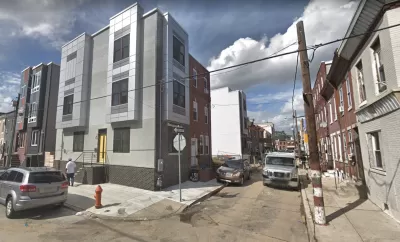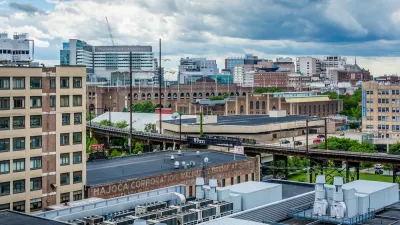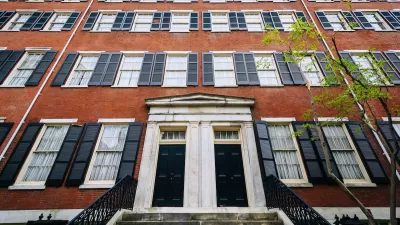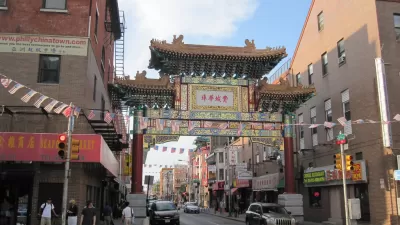Neighborhoods in Philadelphia are undergoing rapid, unprecedented change. Proposed legislation would ban the architectural signifiers of that change.

Philadelphia City Councilmember Kenyatta Johnson leads a quickly gentrifying corner of the city, South Philadelphia, and after recently concluding a smooth reelection campaign, the councilmember is proposing legislation to regulate construction in the district.
As reported by Caitlin McCabe, Councilmember Johnson's proposed actions include a ban balconies and bay windows: "The two architectural features would still be allowed outside of those two neighborhoods, but according to the bill, the distance from which they can project from a building would continue to be regulated."
McCabe provides context and describes the significance of these architectural features in the political debate around gentrification and a changing city:
Johnson’s legislation comes amid unprecedented change in his district, which stretches from the fast-gentrifying neighborhoods of Graduate Hospital and Point Breeze, to areas farther south and west, including the Navy Yard and Eastwick. Thousands of new rowhouses have been built, adding taller and showier structures to older and modest rowhouse blocks. The boxy, bump-out bay windows that Johnson aims to legislate have become a well-known architectural feature of Philadelphia’s construction boom, just as aluminum siding and roof decks have.
Neighborhood advocates see these architectural features as signifiers of gentrification and displacement. Others worry that such protrusions from building facades will destroy the character of existing neighborhoods. The political intrigue surrounding development in South Philadelphia and the controversies of Councilmember Johnson's time in office are thoroughly detailed in the article.

Trump Administration Could Effectively End Housing Voucher Program
Federal officials are eyeing major cuts to the Section 8 program that helps millions of low-income households pay rent.

Planetizen Federal Action Tracker
A weekly monitor of how Trump’s orders and actions are impacting planners and planning in America.

Ken Jennings Launches Transit Web Series
The Jeopardy champ wants you to ride public transit.

California Invests Additional $5M in Electric School Buses
The state wants to electrify all of its school bus fleets by 2035.

Austin Launches $2M Homelessness Prevention Fund
A new grant program from the city’s Homeless Strategy Office will fund rental assistance and supportive services.

Alabama School Forestry Initiative Brings Trees to Schoolyards
Trees can improve physical and mental health for students and commnity members.
Urban Design for Planners 1: Software Tools
This six-course series explores essential urban design concepts using open source software and equips planners with the tools they need to participate fully in the urban design process.
Planning for Universal Design
Learn the tools for implementing Universal Design in planning regulations.
Ada County Highway District
Clanton & Associates, Inc.
Jessamine County Fiscal Court
Institute for Housing and Urban Development Studies (IHS)
City of Grandview
Harvard GSD Executive Education
Toledo-Lucas County Plan Commissions
Salt Lake City
NYU Wagner Graduate School of Public Service





























